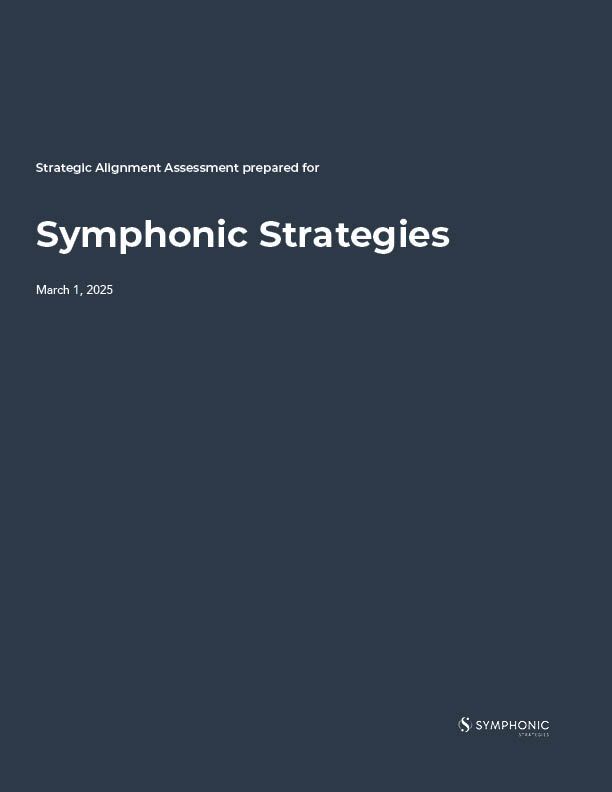Symphonic | Strategies
Alignment Hub
The Alignment Hub is your organization’s control center for ensuring that every part of your strategy moves in concert.
Just as a conductor ensures that every section of an orchestra is in sync, this hub provides the tools, frameworks, and insights needed to keep our teams, initiatives, and objectives aligned with the overall vision for our organization.
Just as a conductor ensures that every section of an orchestra is in sync, this hub provides the tools, frameworks, and insights needed to keep our teams, initiatives, and objectives aligned with the overall vision for our organization.

Strategy Captains
Strategy Captains
Our Strategic Plan for 2025-2027

Strategic Alignment Audit Report

Our Strategy-at-a-Glance



What it takes to be aligned at the organizational level
What it takes to be aligned at the team level
What it looks like when we aren't aligned
What it looks like when we aren't aligned
Stay up-to-date
Upcoming Touchpoints
Tune-Up Sessions
Core Strategy Bites
The Marketing Team
What it takes to be aligned within Marketing
Marketing
Daily Alignment Guides
How each role in Marketing contributes strategically
The Content Team
What it takes to be aligned within Content
Content
Daily Alignment Guides
How each role in Content contributes strategically
Customized Strategy Bites for Content
The Sales Team
What it takes to be aligned within Sales
Sales
Daily Alignment Guides
Customized Strategy Bites for Sales
How each role in Sales contributes strategically
The Strategic Account Management Team
What it takes to be aligned within Strategic Account Management
Strategic Account Management
Daily Alignment Guides
How each role in Strategic Account Management contributes strategically
Symphonic Resources
